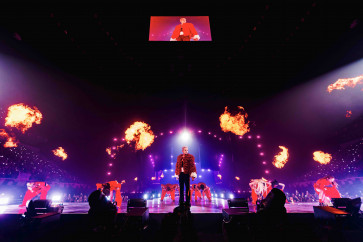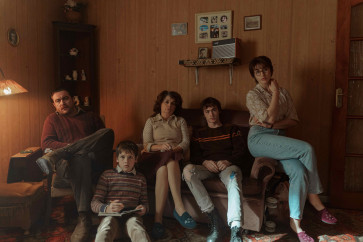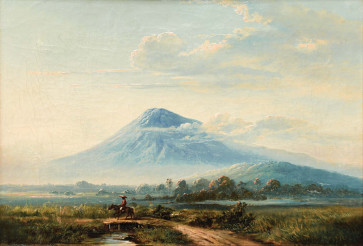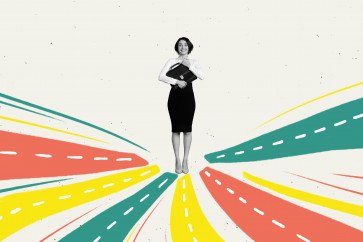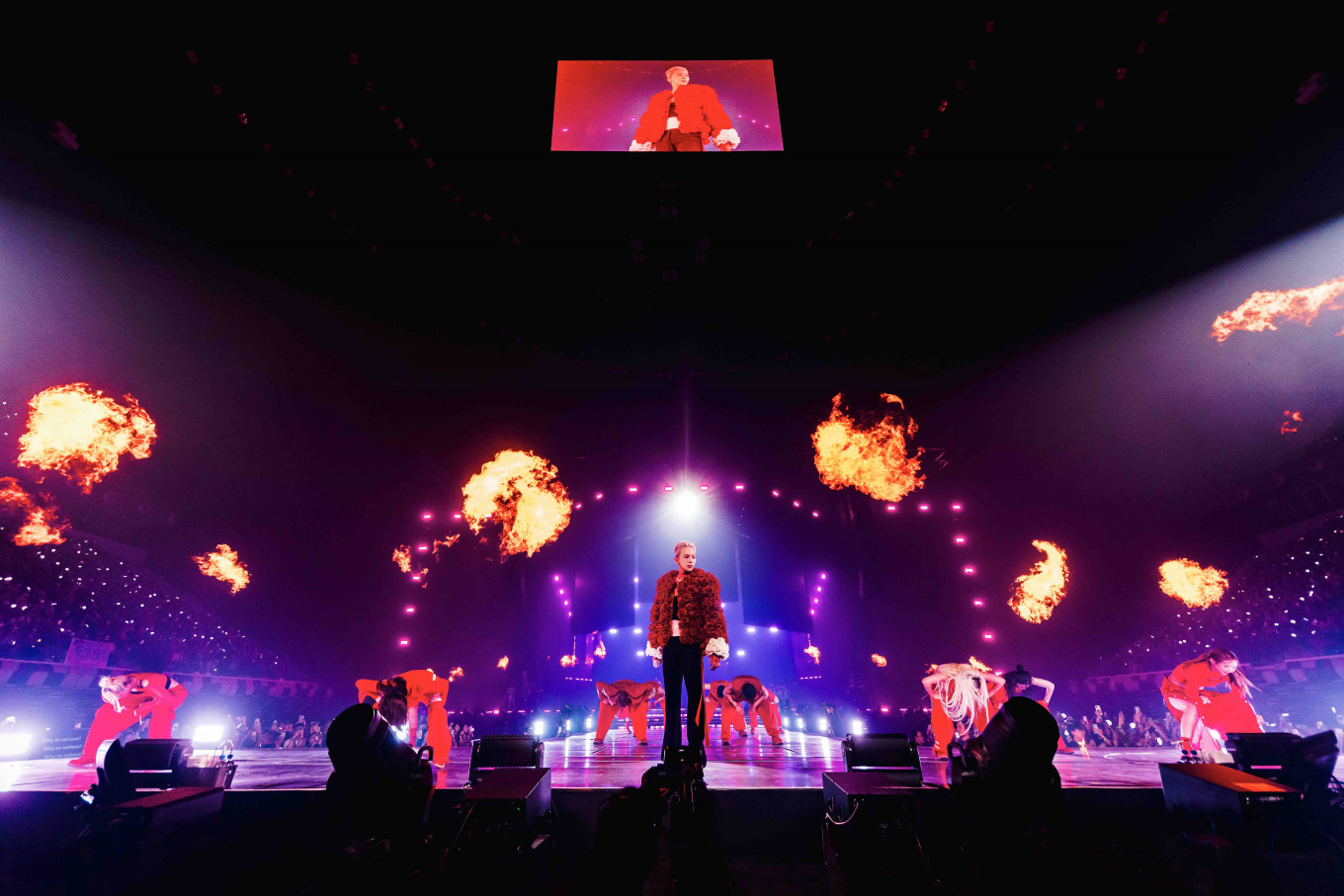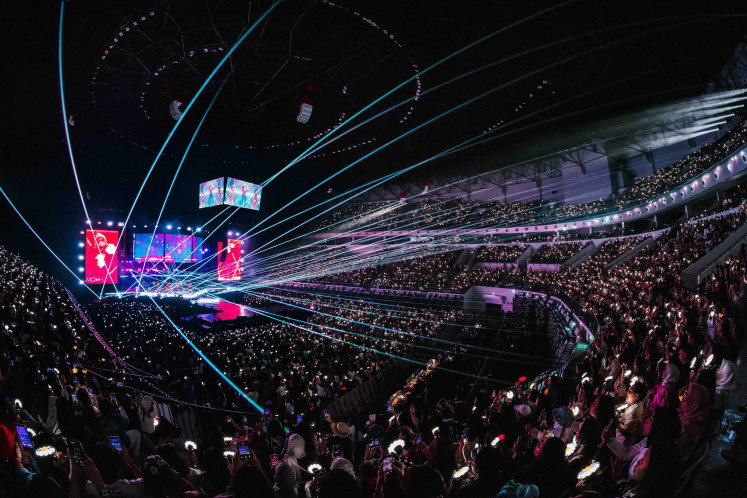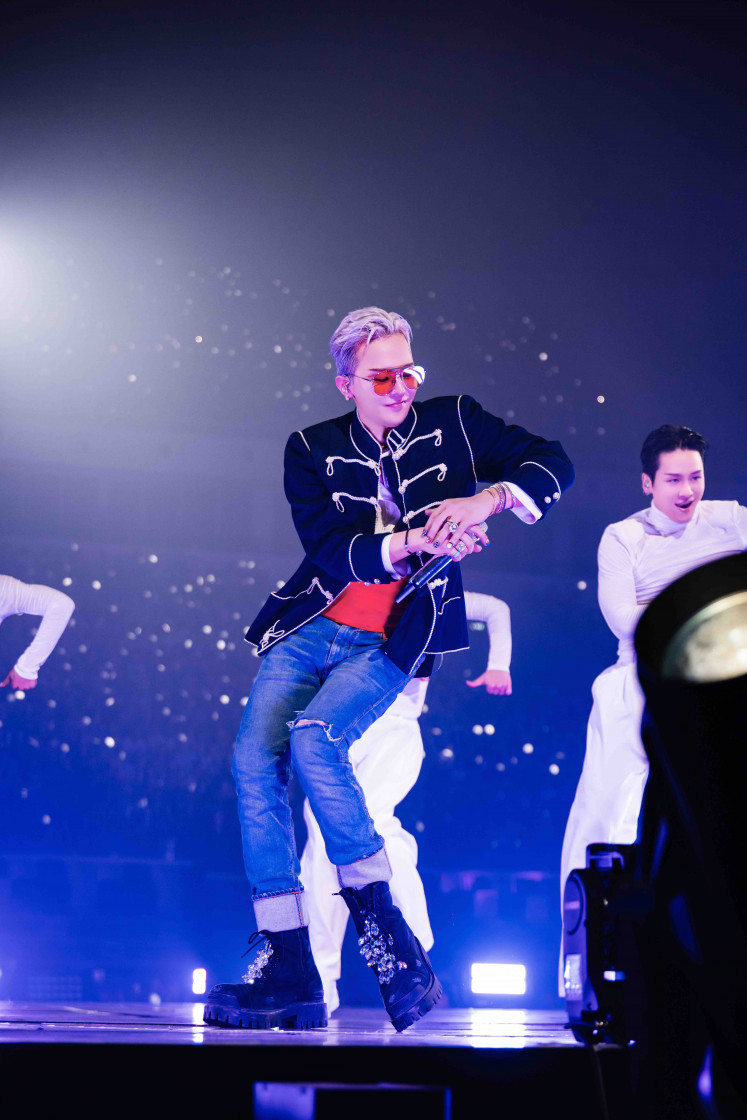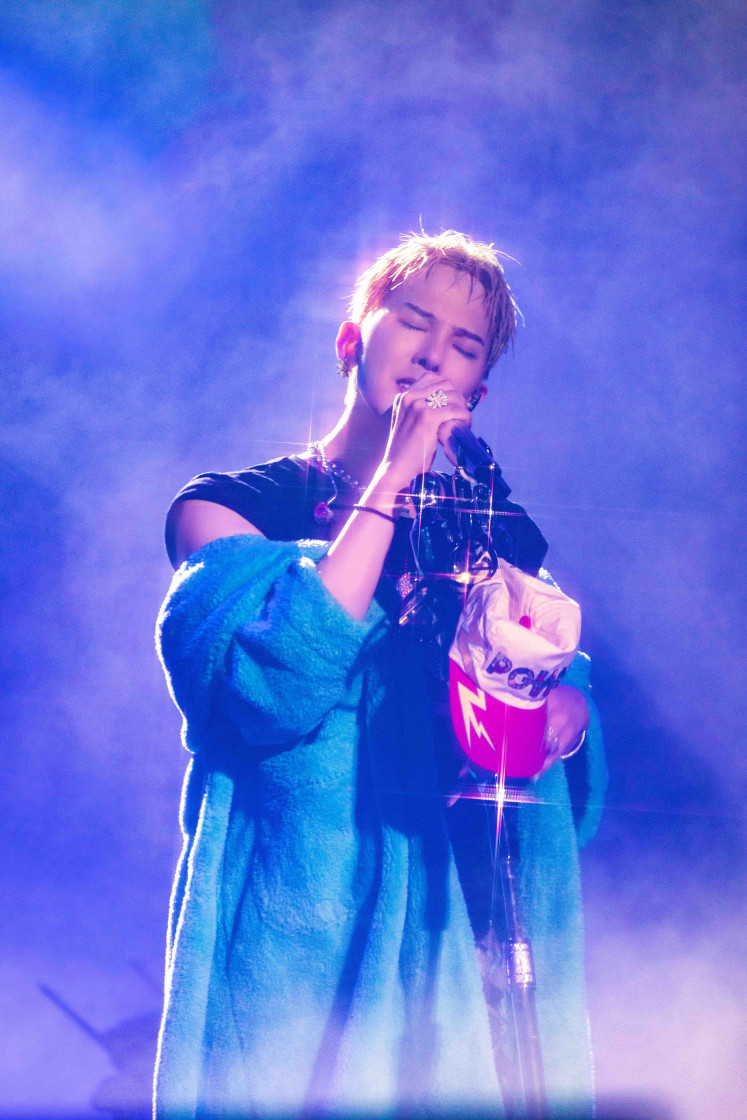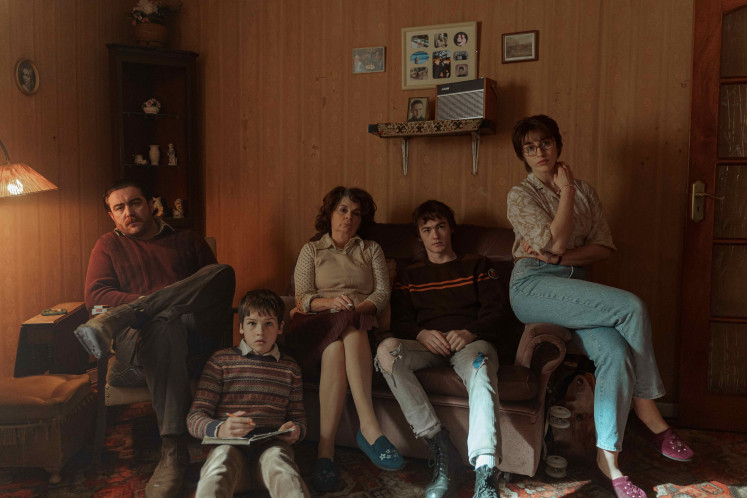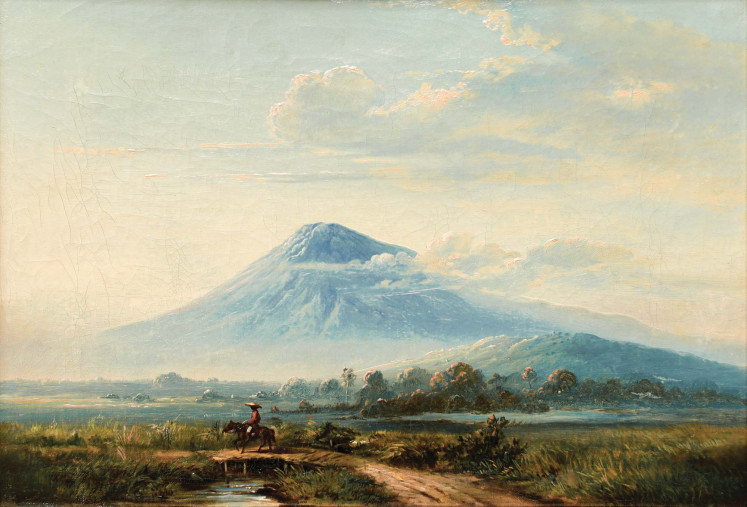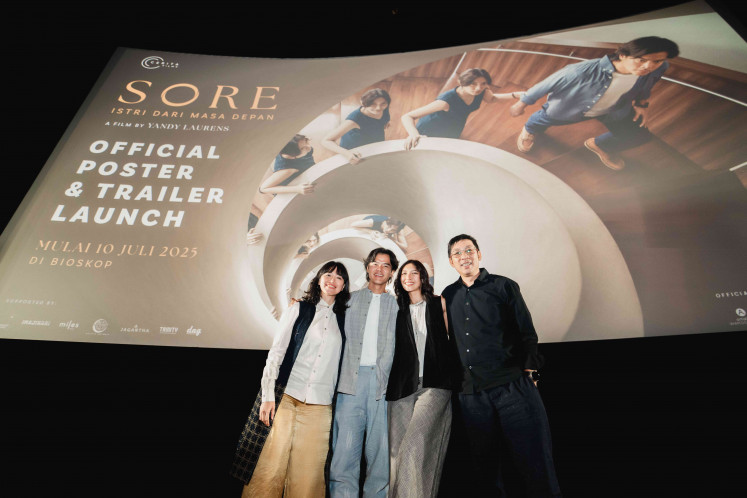Big bang: G-Dragon makes his Indonesia comeback on July 25 at the Indonesia Area in Senayan, Jakarta, for a two-day live concert as part of his Übermensch 2025 World Tour.
Following two failed attempts at scoring tickets to the Jakarta leg of the Übermensch G-Dragon 2025 World Tour, joining both rounds of general sales only to watch them sell out in under an hour each time, my friend and I had given up.
Years since he left the spotlight, it’s clear the South Korean artist born Kwon Ji-yong, also known as the initials GD derived from his stage name, is still a massive superstar who can crash ticketing portals.
Then, just a week before the two-date concert opened at the Indonesia Arena in Senayan, Jakarta, luck struck: We managed to get media passes, an unexpected twist that turned our disappointment into disbelief and elation. We were over the moon.
My friend Firstty is a longtime member of the BigBang’s official fan club, V.I.P., but for me, this wasn’t just my first G-Dragon concert; it was my first K-pop concert ever.
It didn’t truly hit me until about five hours before showtime. I was about to breathe the same air as G-Dragon, the leader and mastermind behind BigBang, one of the biggest second-generation K-pop boy groups.
I’d been obsessed with BigBang since high school in 2009, long before the scandals and its near-disbandment, and before G-Dragon – one of the first idols to write and produce his group’s music, which was practically unheard of at the time – disappeared from the public eye.

Thank you!
For signing up to our newsletter.
Please check your email for your newsletter subscription.
This was back when K-pop hadn’t broken fully into the mainstream: before BTS and Blackpink became global powerhouses; before streaming and voting turned into organized fandom warfare; before idols filled the internet with endless content to stay visible.
And now, I was about to see him in the flesh.
Unwavering demand
Early on July 25, the Indonesia Arena began filling up with a sea of so-called FAMs, or G-Dragon fans, who had waited years for his comeback and in some ways, BigBang’s too.
The crowd was a kaleidoscope of devotional expression. Many concertgoers were dressed in looks inspired by G-Dragon, : the red-rose blazer of Übermensch, the regal pink suit worn to the 2024 MAMA Awards, the now iconic headscarves. Some had even flown in from China, Korea and Japan.
I was struck by the range of ages. Like me, many were millennials in their early to late 30s who’d grown up with BigBang, shaped by their music and style. Some even brought their kids, almost like passing down a cultural legacy, teaching them early about the legend and the sheer magnetic force of a G-Dragon concert.
There were also younger faces: Gen Z fans likely drawn in by the Übermensch album that dropped in February, as well as his distinctive sound and aesthetic.
The air carried a shared sense of history, a mix of nostalgia and awe. It felt like we weren’t just there for a concert, but to honor an era still evolving.
Firstty and I made sure to grab Daisy-Bongs, G-Dragon’s signature daisy-shaped light stick with a missing petal that has become shorthand for the artist himself.
Outside, the scene was just as telling. Fans were still hunting for last-minute tickets, hoping for a miracle. The official merchandise stands were empty, having sold out well before the show started.
Over two nights, the concert reportedly drew a total of 22,000 attendees.
Wild force
Once we entered the arena, the stage silenced my inner yapper. It was equal parts minimal and majestic: a T-shaped runway slicing through the crowd, with VVIP pits hugging its edges, wrapped with sections VIP A and B in a U-shape. Behind them, tiered seating rose toward the ceiling.
Nostalgia and novelty: The Übermensch G-Dragon 2025 World Tour transformed Senayan’s Indonesia Area on July 25 with a layered, theatrical design of unfolding panels, sharp lighting cues and a crane draped in daisies. (Courtesy of Galaxy Corporation/.)
When the concert began, the stage transformed. Hidden panels unfolded into staircases for G-Dragon to ascend, like he was climbing into legend.
At one point, a crane adorned with cascading daisies emerged, lifting him skyward. Floating above the crowd like a dream, he smiled and waved at fans in the upper tiers.
In the second half, the magic escalated: Two towering gray figures slowly rose from each side of the stage to form the silhouette from the Übermensch album cover. The crowd lost it when the artist joked that the silhouettes were “Taeyang and Daesung”, his BigBang brothers, watching over the show.
The theatrics didn’t end there. Ever the chameleon, GD commanded the stage with an energy that shifted and surged to match whatever the music demanded of him.
During tracks like “Crooked”, “Who You?” and other raw, defiant songs from earlier albums that channeled his frustrations, he was a wild force, leaping and writhing across the stage in a storm of dark, blinking lights.
His dancers matched his energy, amplifying the choreographed chaos and turning his rasping vocals into something feral.
Evolution of ‘cool’
Longtime fans know that G-Dragon doesn’t do precision dancing, the kind that sends fans of other groups into overdrive with flawlessly executed routines.
His power lies in something harder to replicate: an instinctive command of rhythm. He doesn’t let the beat dictate his movements. Instead, he bends it to his will, translating it into effortless, uncalculated yet impossibly controlled motions.
It’s a style that defies description other than one word: cool.
That coolness is the core of his brand. It’s why he’s a trendsetter, the kind who can casually redefine fashion by mainstreaming genderless silhouettes, pulling off clashing patterns and making even a simple bucket hat iconic.
What’s remarkable is how that cool has endured. Even after years away, his influence remains untouched, as if time paused for him. Trends have come and gone, but his aura never left.
But onstage, the musician felt different now. Not the untouchable icon we once knew, but a more mature, more open version.
Rhythm rebel: The stylish musician and his entourage of dancers step in time on July 25 at the Jakarta’s Indonesia Area during the Übermensch G-Dragon 2025 World Tour.
(Courtesy of Galaxy Corporation/.)
During slower songs like “Drama” and “Bonamana”, G-Dragon revealed a vulnerable side. The energy didn’t vanish; it simmered just below the surface. Even in his quietest moments, there was a trace of venom, controlled but unmistakable.
Between songs, he chatted with the audience, cracked jokes, made faces at the big screen. It felt refreshingly different, providing a glimpse of the man behind the legend, the person who can command the stage with ferocity one moment and disarm fans with humor the next.
The duality was especially striking during “Drama”. GD stood center stage in an ethereal setup. A sheer, veil-like fabric draped from his mic stand and flowed dramatically across the floor. White lasers and soft lighting bathed him in a solemn glow. Alone, without backup dancers, he sang like it was a confession, mourning a lost love, a broken bond.
The lyrics hint at something deeper than romance. “What goes around, there comes the karma” and “You never like it when it's nice” read like a commentary on his relationship with fame. The song feels like both a heartbreak anthem and a meditation on the cost of living under the relentless public gaze.
But my favorite performance would have to be “Home Sweet Home”, the opening track from Übermensch and the only one with vocals from Taeyang and Daesung. Hearing their voices together sent me spiraling back through their history.
For V.I.P.s like me, that moment wasn’t just nostalgia. It was something like hope.
Genuine comeback
BigBang’s story has been nothing short of tumultuous. An underdog from a small label, the group was mocked at its debut for not being “idol material”. But the trio clawed their way to the top with sheer talent and the brilliance of G-Dragon’s songwriting.
They didn’t just dominate Korea; they went global. But alongside that success came the scandals that fed their aloof bad boy image, so different from the meticulously polished K-pop idols of their generation.
Eventually, the darkness caught up. When one former member committed crimes so severe he does not deserve to be named, BigBang was brought to its knees. At the time, most of the members were serving mandatory military service, leaving fans uncertain about the group’s future.
Crooning icon: Draped in soft lighting and channeling vulnerable intensity and honesty, G-Dragon delivers a solo rendition of “Drama” on July 25 at the Indonesia Area in Senayan, Jakarta, during the Indonesia leg of his Übermensch 2025 World Tour. (Courtesy of Galaxy Corporation/.)
I still remember when BigBang released Still Life in 2022. It felt like a goodbye, not a comeback. So when “Home Sweet Home” showed up on G-Dragon’s album, it ignited the tiniest flicker of hope.
Hearing it live? That flicker roared into flame.
It isn’t just a song. It’s a sign that maybe, just maybe, they are on their way back, building toward a reunion for BigBang’s upcoming 20th anniversary in 2026.
As the encore faded and lights dimmed, one thing was crystal clear: His name still sells out arenas for a reason.
G-Dragon’s staying power is not just about nostalgia for what he once was, but about the undeniable force of what he still is: an artist who refuses to be extinguished, who continues to reinvent and who, after all these years, still leaves us wanting more.
Audrey Andini is a corporate girl who once dreamed of becoming a symbology professor... until she realized that Tom Hanks makes a much better Robert Langdon.




